4ms Looping Delay Handleiding
4ms
Niet gecategoriseerd
Looping Delay
Bekijk gratis de handleiding van 4ms Looping Delay (20 pagina’s), behorend tot de categorie Niet gecategoriseerd. Deze gids werd als nuttig beoordeeld door 29 mensen en kreeg gemiddeld 4.5 sterren uit 15 reviews. Heb je een vraag over 4ms Looping Delay of wil je andere gebruikers van dit product iets vragen? Stel een vraag
Pagina 1/20

Looping Delay
4ms Company
User Manual 1.0 – June 11, 2023
The Looping Delay is a clock-based delay for creative synthesis. Not a tape or analog
emulation, but a modern crystal-clear digital delay, the Looping Delay combines features of
delay, looping, and sample-tight synchronization for powerful and dynamic sound capture and
modification. Based on the offers the same high-Dual Looping Delay, the Looping Delay
quality sound in a smaller, single-channel format.
• Stereo or mono mode (Return/Send becomes right channel In/Out in stereo mode)
• 87 seconds maximum delay/loop time in mono, or 43 seconds in stereo.
• 48kHz/24-bit sampling rate, loop recorded at 16-bit
• Extremely quiet, low noise, low jitter design
• Delay and loop time is sync-able to a clock, or a division or multiplication of a clock
• Infinite Hold mode for looping and windowing
• Reverse feature for toggling direction of playback
• Feedback ranges from 0% to 110%
• 1V/octave tracking for Resonant Delays (Karplus-Strong)
• Wet/Dry mix output, as well as dedicated Send/Return for feedback loop
• CV and trigger inputs for all features

Table of Contents
Setting up your Looping Delay
1. Power off your Eurorack system.
2. On the back of the you will see a 16-pin header labeled “-12V”. The 16-pin header Looping Delay
connects to a Eurorack power header using the included power cable. Connect one end of the
power cable to a Eurorack power header on your power supply distribution board and the other end
to the Looping Delay with the red stripe on the power cable oriented towards the bottom of the
module.
3. Using the included screws, securely attach the to the rails of your case. Looping Delay
4. Power on your Eurorack system.
Note: The Looping Delay is reverse-polarity protected, but incorrectly connecting any module in any
system can damage other modules on the power bus.
Setting up your Looping Delay! "..............................................................................2
Basic features:! ".......................................................................................................3
Controls and Jacks! "................................................................................................3
Infinite Hold vs. 100% Feedback! "...........................................................................7
Why do I hear something I played a long time ago?! ".............................................7
Signal Routing: Using Send and Return! "................................................................8
Advanced Usage 8
Loop start and stop points: Trimming the loop! "......................................................8
Windowing (aka Scrolling or Scrubbing)! "................................................................8
Using CV with Windowing! "...............................................................................9
Unquantized Time Mode and 1V/Oct CV! "..............................................................9
Stereo and Mono Modes! ".....................................................................................10
Octave Up/Down When changing Modes! ".....................................................10
Memory Clear! "......................................................................................................10
Quantized Change Mode! ".....................................................................................11
Using External Clocks! "..........................................................................................11
Patch Ideas 12
Resonant Delay (Waveguide, Karplus-Strong)! ".....................................................12
Basic Resonant Delay! "....................................................................................12
Playing Resonance with a keyboard or sequencer! "........................................12
Sound on Sound Looping #1: Creating and Removing Layers! "...........................12
Peeling off Layers! "..........................................................................................13
Sound on Sound Looping #2: External Control! "...................................................13
Sound on Sound Looping #3: More External Control! "..........................................13
Granular Scrubbing! "..............................................................................................14
Special Features 15
Bus Clock Jumper! "...............................................................................................15
System Settings Mode! "........................................................................................15
Audio Bootloader! ".................................................................................................18
Firmware Version! ".................................................................................................18
Hardware Test Mode! "............................................................................................19
Factory Reset! ".......................................................................................................19
Technical Specifications!......................................................................................19
Page of 2 20

Basic features:
• 87 seconds of delay/loop time in mono mode, 43 seconds in stereo mode
• 48kHz/24-bit sampling rate, loop is stored at 16-bit
• Extremely quiet, low-noise and low-jitter design
• button and external clock jack set the timing for one "beat"Ping
• Delay/loop time set as a number of musical beats (or fractions of beats) using the knob, Time
switch, and CV jack
• Sample-accurate master clock output for perfect synchronization
• Loop clock output
• Time switches change range of knob from 1/8th notes up to 32 barsTime
• Digital feedback, up to 110%
• control, independent of dry/wet signal mixDelay Feed
• mode disables recording and plays a loopInfinite Hold
• Start and End points of loop can be modified in real-time for “scrubbing” or “windowing”
• mode plays memory contents backwardsReverse
• Resonant Delays (ala Karplus-Strong)
• Delay time can be as short as 650uS
• CV jack can respond at 1V/octave in Time Unquantized Time Mode
• Trigger inputs for toggling Infinite Hold and Reverse
• for feedback with external modules Send and Return
• function as right channel In and Out in stereo modeSend and Return
• CV jacks to control (record level), and Time, , Feedback Delay Feed Mix
• Various algorithms can be selected interfacing with jittery external clocks (External Clock De-
jitter)
• quantizes toggling of Quantized Change Mode Infinite Hold and Reverse
• HP Eurorack module 16
Controls and Jacks
Ping Button and Jack
The Ping button allows you to tap the tempo to set the base clock. One tap is
equal to one beat. The base clock can also be set by an external clock by
patching it into the jack Ping .
The Looping Delay requires a base time, which is referred to as a in this “beat”
manual. The delay/loop time is mathematically related to the length of one beat. If
you are familiar with other 4ms modules, you may be familiar with the concept of
“Ping”. In the is the Looping Delay, the beat Ping.
There are several ways to establish a beat:
• button twice. One beat will equal the time between your taps. Tap the Ping
• Patch an external clock into the jack. One beat will equal the time Ping
between the last two pulses received at the jack.
• Just turn on the and do nothing more! The Looping Delay Looping Delay
automatically boots up at 240BPM.
Another way of setting the timing is by jumpering the Clock Bus header to RECV
and using a Clock Bus master (such as the 4ms QCD or MiniPEG) to send the
clock over the power distribution board. See the section on Bus Clock Jumper
page 15.
The Looping Delay’s clock is extremely stable and jitter-free. It's highly
recommended to use the internal clock (tap clock) if possible, Looping Delay
because it's quantized to the sample clock and has less jitter than most
commercially available clock sources. Using the as a master clock Looping Delay
will provide the tightest timing possible. However, if it's not possible to use the
Page of 3 20
Product specificaties
| Merk: | 4ms |
| Categorie: | Niet gecategoriseerd |
| Model: | Looping Delay |
Heb je hulp nodig?
Als je hulp nodig hebt met 4ms Looping Delay stel dan hieronder een vraag en andere gebruikers zullen je antwoorden
Handleiding Niet gecategoriseerd 4ms
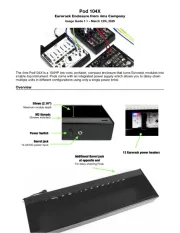
2 Augustus 2025

4 Mei 2024

3 Augustus 2023

3 Augustus 2023

24 Juni 2023

16 Juni 2023

16 Juni 2023

2 Juni 2023

19 Mei 2023

15 Mei 2023
Handleiding Niet gecategoriseerd
- Metronic
- ARRI
- IHealth
- Kuryakyn
- Suprema
- BWT
- IKRA
- Jomox
- FireAngel
- Sharp
- Smartwares
- True Blue Power
- Code
- Katadyn
- Proficare
Nieuwste handleidingen voor Niet gecategoriseerd
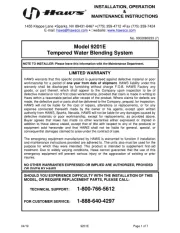
16 September 2025
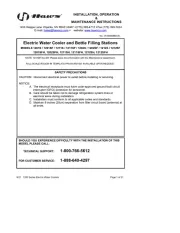
16 September 2025
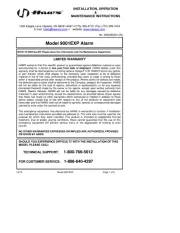
16 September 2025

16 September 2025
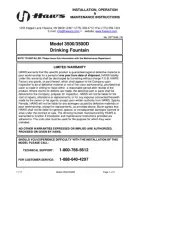
16 September 2025
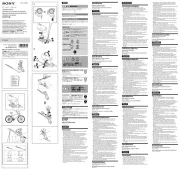
16 September 2025
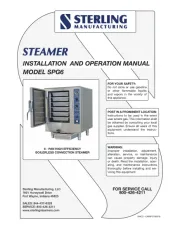
16 September 2025

16 September 2025
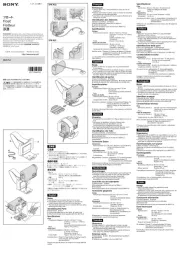
16 September 2025
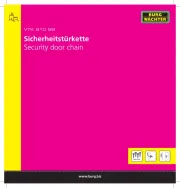
16 September 2025